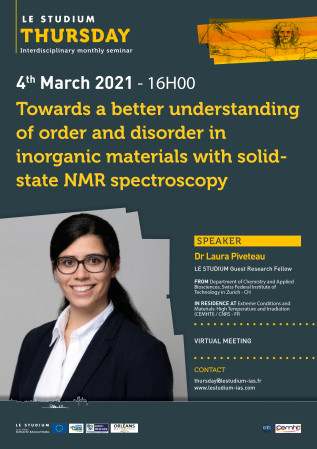Towards a better understanding of order and disorder in inorganic materials with solid-state NMR spectroscopy
Presentation
Inorganic materials such as metals, glasses, semiconductors, cements and many more, are ubiquitous in our everyday lives and are used in house construction, electronic devices, mobility and numerous other areas. Scientists agree that the properties of materials are the macroscopic result of their atomic and molecular structures. Accordingly, a detailed characterisation of the material structure is essential for the development and production of specific material properties. There are numerous analytical methods which provide information about a material’s structure, but due to its power and versatility, X-ray diffraction (XRD) has evolved into the workhorse for structure elucidation. However, XRD is limited in the description of local disorder and mostly blind to amorphous materials.
In this context, nuclear magnetic resonance (NMR) spectroscopy is particularly interesting. In contrast to XRD, NMR spectroscopy imposes no requirements to the crystallinity of the investigated material and it can reveal the disorder and distribution of chemical species. Indeed, NMR spectroscopy is particularly sensitive to short-range structures and can often provide information on the nature, number and geometry of the nearest coordination sphere. With carefully selected experiments, the chemistry, geometry and topology of chemical species can be determined accordingly. However, structures in the intermediate distance range (i.e. up to the order of nanometers) remain difficult to describe, although it is suggested that they may be, if not the origin, at least strongly involved in important physical phenomena or processes such as phase segregation or crystallisation. Extending the spatial range accessible through NMR spectroscopy is an active area of research and in this talk we will discuss new approaches that attempt to shed light on the blind spot that midrange structures represent in structure elucidation.
Speaker
LE STUDIUM Guest Research Fellow
FROM: Department of Chemistry and Applied Biosciences, Swiss Federal Institute of Technology, Zürich - CH
IN RESIDENCE AT: Extreme Conditions and Materials: High Temperature and Irradiation (CEMHTI) / CNRS - FR







